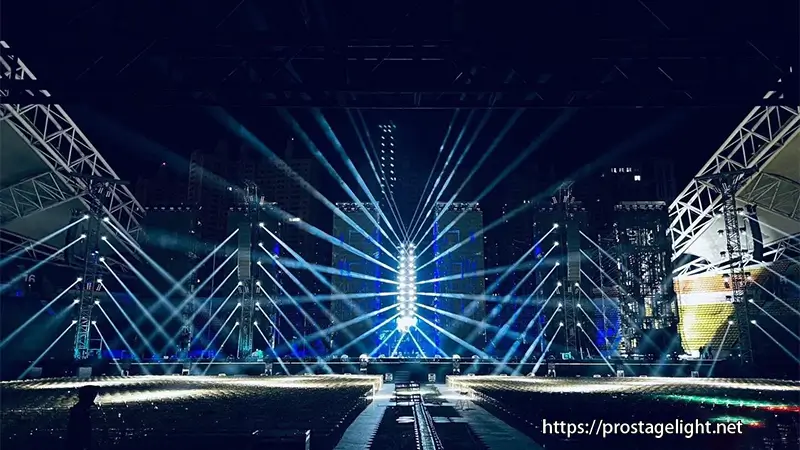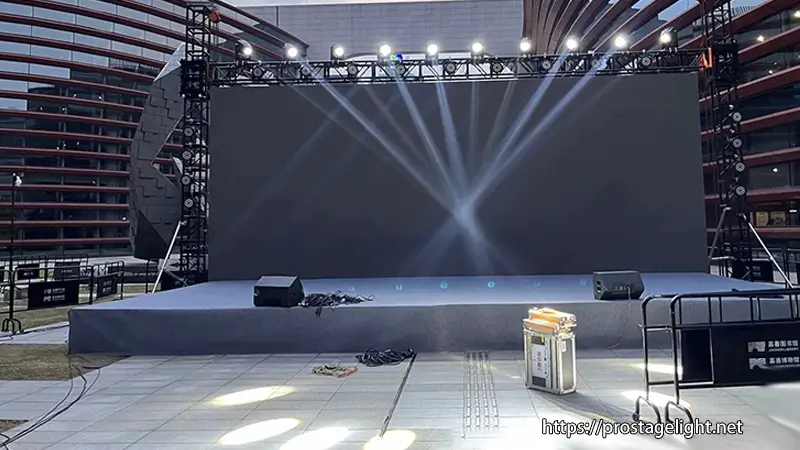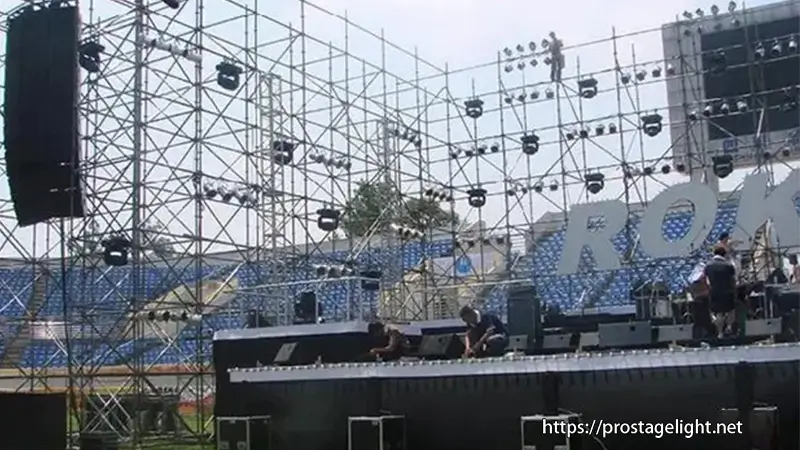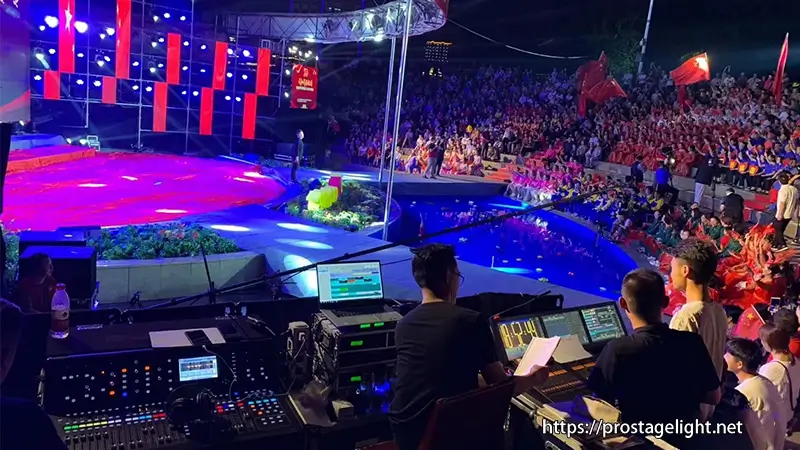Understanding DMX Stage Light Controllers: Uses, Benefits, and Selection Tips
Dive into the world of stage lighting with our in-depth guide on DMX controllers. Learn about their uses, benefits, and how to optimize performance for your lighting needs.
Exploring the World of DMX Stage Light Controllers
Introduction to DMX Controllers in Stage Lighting
Brief Overview of DMX Technology in Stage Lighting
DMX, or Digital Multiplex, is a digital communication standard widely used in stage lighting and effects. Originating in the mid-1980s, DMX technology revolutionized the world of stage lighting by enabling easier control of complex lighting systems. This technology allows for the manipulation of lighting fixtures from a central control point, making it indispensable in modern lighting designs.
Importance in Modern Lighting Design
DMX controllers have become an essential element in the high-speed realm of stage production. They offer unparalleled mastery and adaptability, enabling lighting designers to craft elaborate and vibrant lighting arrangements that harmonize with the music, movement, and ambiance. Whether it be intimate community playhouses or grandiose concert arenas, DMX controllers serve as a crucial catalyst in transforming artistic visions into reality.
The Fundamentals of DMX Lighting Control
Definition and Basic Concept of DMX Controllers
DMX controllers are devices that send DMX signals to stage lighting fixtures, enabling control over attributes like intensity, color, and movement. At their core, these controllers translate the user's input into digital signals, which are then sent through DMX cables to the fixtures.
How DMX Controllers Integrate with Stage Lighting Systems
Integration is seamless and versatile. DMX controllers connect to various types of lighting fixtures, such as spotlights, LED panels, and moving heads. Each fixture has a DMX address, and the controller sends specific instructions to each address. This setup allows for individual control of each fixture or synchronized control of groups, creating a cohesive lighting experience.

Key Features of DMX Controllers
Discussion of Standard Features
DMX controllers come equipped with various features, including the ability to control a specific number of light fixtures or parameters. This channel capacity determines the extent to which they can exert control. Additionally, connectivity is an essential factor, as most controllers are designed to support extensive lighting setups and provide multiple DMX outputs.
Advanced Features and Their Practical Applications
Advanced DMX controllers boast features like programmable scenes and chases, touchscreen interfaces, wireless DMX capabilities, and integration with software for visualizing lighting designs. These features enable more complex and creative lighting designs, essential for large productions and dynamic performances.

Benefits of Using DMX Controllers for Stage Lighting
Enhanced Lighting Control and Flexibility
DMX controllers offer unparalleled control over lighting. Designers can adjust intensity, color, and movement to suit the mood and style of the performance. This flexibility is crucial for adapting to different scenes and themes in real-time.
Energy Efficiency and Performance Optimization
DMX controllers contribute to energy efficiency by allowing precise control over lighting intensity and duration, reducing unnecessary power usage. They also optimize performance by ensuring that each fixture operates at its best, contributing to the overall visual impact.
Scalability for Different Event Sizes
One of the greatest advantages of DMX controllers is their scalability. Whether it's a small event with a handful of lights or a large concert with hundreds of fixtures, DMX systems can be scaled to fit the size and complexity of any event.

Selecting the Right DMX Controller for Your Needs
Factors to Consider
When choosing a DMX controller, consider the number of channels needed, compatibility with your lighting fixtures, and the specific features required for your project. The user interface and ease of programming are also crucial, especially for complex lighting designs.
Tips for Choosing Controllers Based on Project Scope
If you're organizing a smaller event, a DMX controller with a limited number of channels could be suitable. However, for larger and more intricate shows, it's advisable to choose a controller that offers a greater channel capacity and advanced functionalities such as scene programming and software integration.
Best Practices for Optimizing DMX Controller Performance
Setup and Configuration Tips
Proper setup and configuration are key to optimizing performance. This includes correctly addressing each fixture, ensuring proper cable connections, and organizing the control board for easy access to frequently used functions.
Troubleshooting Common Issues
DMX systems often experience common issues such as signal interference, addressing errors, and cable faults. However, with regular maintenance and a deep understanding of the system, these problems can be quickly identified and resolved.

Future of DMX Controllers in Stage Lighting
Emerging Trends and Technological Advancements
Advancements in wireless DMX technology and integration with smart devices are shaping the future of DMX controllers. Anticipated advancements in AI and machine learning could potentially lead to more intuitive and automated control of lighting systems.
Predictions for Future Applications and Developments
The future of DMX controllers lies in increased flexibility, ease of use, and integration with other stage technologies. We may see more user-friendly interfaces, seamless integration with audio and visual systems, and even more energy-efficient designs.
Conclusion
To summarize, the significance of DMX controllers in contemporary stage lighting cannot be overstated. These invaluable instruments provide unparalleled command, adaptability, and expandability. Whether you possess beginner-level knowledge or have extensive experience in the field, comprehending and harnessing the potential of DMX technology is crucial for crafting impactful and dynamic lighting concepts. As technological advancements continue to unfold, the capabilities and uses of DMX controllers will undoubtedly evolve, further enhancing the electrifying realm of stage lighting.
Frequently Asked Questions
Q1. What is a DMX controller in stage lighting?
A1. A DMX controller is a device that sends DMX signals to control attributes of lighting fixtures, like intensity, color, and movement, in stage lighting setups.
Q2. Why are DMX controllers important in modern lighting design?
A2. DMX controllers offer precision and flexibility in lighting control, essential for creating dynamic and intricate lighting effects in modern stage productions.
Q3. What are some standard features of DMX controllers?
A3. Standard features include channel capacity, determining how many fixtures can be controlled, and connectivity options for linking to lighting networks.
Q4. How do DMX controllers contribute to energy efficiency?
A4. DMX controllers enable precise control over lighting intensity and duration, reducing unnecessary power consumption and contributing to energy efficiency.
Q5. What should I consider when selecting a DMX controller?
A5. Consider factors like the number of channels, fixture compatibility, and the specific requirements of your lighting project when selecting a DMX controller.
Q6. How can I troubleshoot common issues with DMX controllers?
A6. Common issues can often be resolved by checking for signal interference, ensuring secure connections, and correctly addressing fixtures.
Q7. What are some emerging trends in DMX controller technology?
A7. Emerging trends include wireless DMX control and integration with AI for automated lighting control, enhancing the functionality of DMX controllers.
Q8. How is the future of DMX controllers shaping up?
A8. The future of DMX controllers is likely to see them becoming more user-friendly, versatile, and integrated with other technological platforms.
Q9. Are DMX controllers suitable for small events?
A9. Yes, DMX controllers are scalable and can be used effectively in events of all sizes, including small gatherings.
Q10. Can DMX controllers be used with LED lighting?
A10. Yes, DMX controllers are compatible with various types of lighting, including LED, allowing for comprehensive control over LED lighting setups.
